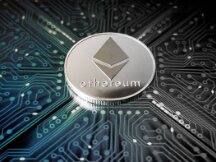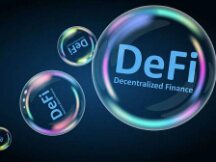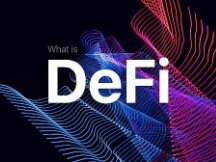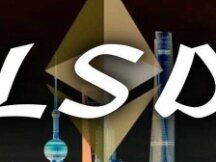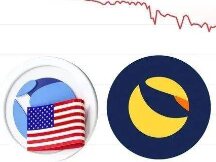Curve War changed CLC combat and the resistance continued.
"Early Curve War seems to have morphed into Convex War and CVX has become the biggest and most popular character in Curve War.
The Curve War, which had already erupted in August 2020, did not get much attention at that time, but the situation changed a lot with the advent of Convex, and the big policies began to crumble against the opponents on the right. Say CVX. The gun's guns have been strong, and CRV, CVX, and YFI have also put in strong performances in recent months. Why Did the War Turns Happen? Who are the key players? Who is the biggest winner?
Why did the war take place?
Convex: Are you hiring me?
Convex is a DeFi protocol specifically designed to boost interest in Curve with the goal of closing as many CRV tokens as possible. CRV holders will not only enjoy the same CRV support as veCRV holders, but will also be able to keep their tokens permanently on Convex in exchange for the same capacity. than cvxCRV, get extra CVX as a gift. The advantage that Convex derives from this is that it has self-regulated CRV rights through the veCRV maintainers.
Within just a few months, Convex had achieved a fairly good CRV and was able to determine the support distribution for the Curve mining pool, which arguably won the first battle in the Curve War. However, for Convex, it's not as simple as controlling the CRV, and solving the problem of locating the amount of tokens he controls is very important.

So Convex did the same with Curve and developed a nest puppet mechanism. CVX is a token management of the Convex platform. Lock CVX allows LPs to vote on Convex's management of veCRV decisions. In other words, controlling the convex curve is like controlling the curve.
Although more subtly, at current prices, the process is burdened by the cost of a dollar of CRV per CVX which would be more than buying a whole CRV. For every dollar paid for vlCVX holders at the end of the Votium vote, the process gets $4.15 in CRV through the mining pool on the Curve platform. As a result, the demand for CVX has increased significantly, and now 142 million cvxCRV and 23 million CVX are closed, and the price of CVX has increased steadily.
Convex's token unlock time is also determined by the value of the CRV lock. When the CRV lock position reaches 500 million, the cycle of CVX 100 million is fully opened, and each marginal CRV received by the platform after the end of CVX release increases the ratio of CVX to CRV. Curve platform lifting capacity weighting increased.
war
The current system heralded a new environment for Convex's mini-war to effectively compete for control of the relaunch curve. For stable CPUs like Alchemix, FRAX, Cluster and Luna, there are two ways to get more CRV boost quota. One is to "bribe" CVX holders, and the other is to store and register CVXs on their own. Since one CVX can handle multiple veCRVs, purchasing the CVX outright is the best option for your process. The problem is that less than 4% of CVX is currently available for purchase on the exchange (less than 4 million CVX) and the amount for which these requirements are to be collected is greater than the market capitalization. . For this reason, the contract also uses its magic power and maintains the CVX as much as possible in its safe state.

need money
Yearn Vault still relies on donating water to Curve mining pool to receive CRV rewards, but only 10% of CRV rewards are closed for Yearn to buy more CRV in the background, while the remaining 90% provide support . Apparently, this led to Yearn losing to Convex in the Curve War. Today, Yearn relied on all of his veCRVs for Convex to ramp up production for his own factory pool. It should be noted, of course, that this committee did not authorize Yearn's personal right to vote for Convex.
Olympe
The Olympus team also realized early on the importance of the curve. The team also hopes to use Curve's voting rights to reclaim OHM's financial resources and achieve meaningful governance of the Curve ecosystem. As part of OIP-43, the team announced that it will increase the security of CVX in Olympus Vault by announcing the CVX contract. From the Olympus team's perspective, being the first to upgrade to CVX is even more important. The cost of a CVX version decreases over time, making it harder and more expensive to obtain a future CVX with the same level of control today. Olympus DAO currently has over 317,000 CVXs worth $6.9 million.
Another stable process
Stable protocols like Abracadabra, Frax, and Alchemix all focus on "thin" CVX handling. In Votium's final vote, Abracadabra and Frax paid holders $2.32 million and $970,000, respectively, while Alchemix allocated $1.3 million between the stable "kickback" pool. of alETH and alUSD. Additionally, with nearly 705,000 registered CVXs under contract with the Frax development team, Abracadabra has decided to spend 5% of its weekly fee on buying and closing CVXs.
dig the mochi
We have to admit that war is a joint venture and there will always be players who take advantage of the situation to break the rules. Last November, the Curve Emergency DAO discovered that a system called Mochi Inu had "controlled the resistance" of the Curve and attacked it quickly, blocking mining and CRV support.
After backing USDM as an "approved" stablecoin and joining the Curve mining pool, Mochi Inu donated $46 million in unrestricted aerial use of Mochi Tokens and used that USDM to deplete USDM-3 lakes from DAI. make profits. The goal is very clear. In other words, it handles more CVX by increasing CRV support to expand the USDM-3 pool, creating a flywheel effect. However, in the end, dissatisfaction with USDM commodities caused USDM to fail, resulting in heavy losses for investors.
Mochi retains approximately 1 million CVX tokens as of today, and even if Convex DAO removes Mochi's voting rights, Mochi may still receive significant future rewards in the form of cvxCRV rewards. Undoubtedly, this behavior contradicts Curve's original decentralization goal and expands Curve's current problems. In the eyes of many people, the Curve has always been a new umbrella and a stronger protection. Without the Curve, many procedures find it difficult to open theirs, but it is true that due to the role of the Curve, it has followed certain rules. If we want the Curve ecosystem to be stronger and more stable in the future, we need to fix this problem.
Should we lose Trojan?
Unlike the real battlefield, the blockchain has an infinite space, that's why other options are always chosen around the walls of the curve, even if they can create their own castles. ? The answer is simple. The inability to create a moat is what makes the "Variant Fund Co-Founder: Web3 Application Protected?" There are also more detailed descriptions in the sentence. In contrast, Curve relies on its unique AMM design and capabilities to create sufficient impact for the application. Additionally, in order to have more voting power, the bigger fish will also opt for a longer CRV closing time, which now has a voting time of 3.65 years. The positive effects of this curve make it difficult to repeat other processes. The best proof now is that it can't compete with the Curve fork.
Curve has now become a fixture in the DeFi zone, and the protocol battle surrounding it is still popular. By managing multiple veCRVs, there's no denying that Convex has helped grow the Curve ecosystem in the process. But because of this, it seems that the old Curve War has become the Convex War, and CVX has become the biggest and most popular character in Curve War. Major protocols such as BadgerDAO, Abracadabra, OlympusDAO, etc. are regular CVXs to control CRV support. From this point of view, the CVX has better performance than the CRV itself. As CVX broadcasts declined, CVX's importance as a "vote handler" continued to increase, allowing its process profile to compete with CVX broadcasts. Curve incentives and CRV itself are a bit general. It makes us wonder if this is a twisted convex moat or a Trojan horse. Who is the winner of this war?

Scan QR code with WeChat
